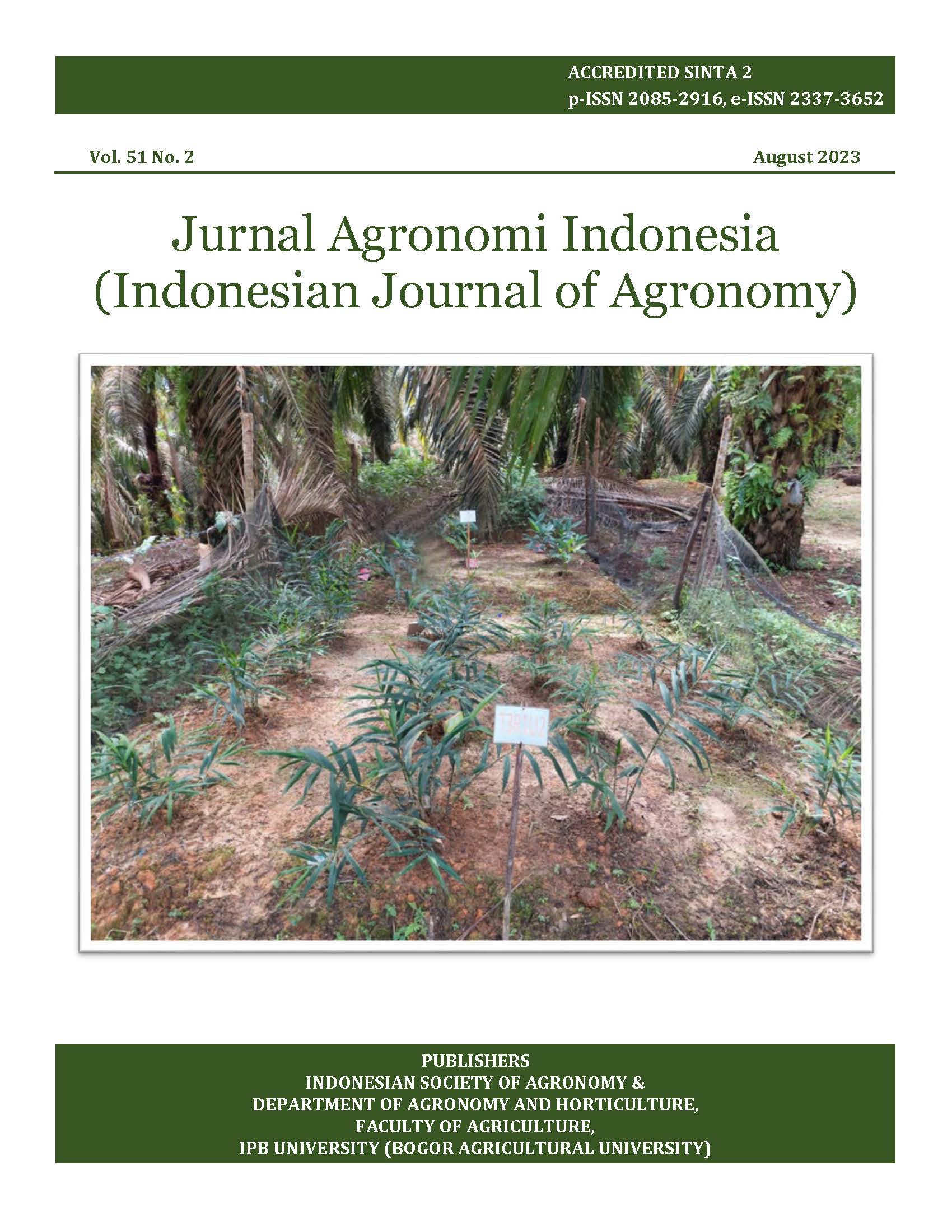Flower bagging affects seed quality and dormancy period in Na-Oogst tobacco (Nicotiana tabacum L. var H-382)
DOI:
https://doi.org/10.24831/ija.v51i2.45493Abstract
Seeds of tobacco plants are unable to germinate immediately after harvest because they have a dormancy period. The seed dormancy period may be shortened by bagging methods to affect the hormone content in the seeds. The bagging flower makes the dark conditions in the process of flowering and seed development, affecting the content of the hormone’s auxin and ABA. This study aimed to determine the effects of different bag colors on the dormancy period of tobacco seeds as evidenced by their vigor and viability. The research was conducted from March to August 2022 at PT. Dwi Light Tobacco Green House, Lombok Wetan, Bondowoso, Indonesia. Four crepe colors of paper were used as bagging treatments (black, red, yellow, blue) and control (without bagging) and replicated four times. The results showed that the bagging treatment significantly affected one hundred-seed weight, seed germination, seed growth rate, and seedling height. Black crepe paper resulted in the highest seed germination percentage (98.5%) and seed growth rate (11.68).
Keywords: bag color, seed germination, viability, vigor













